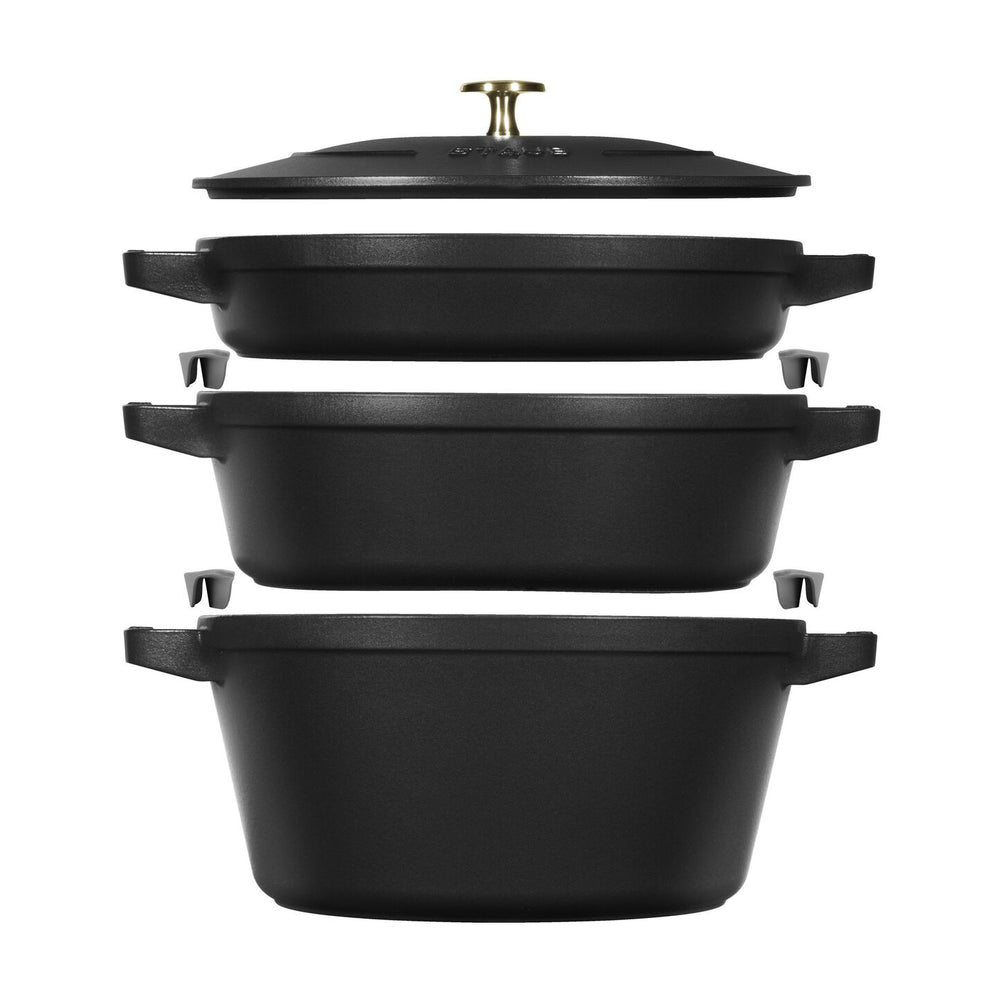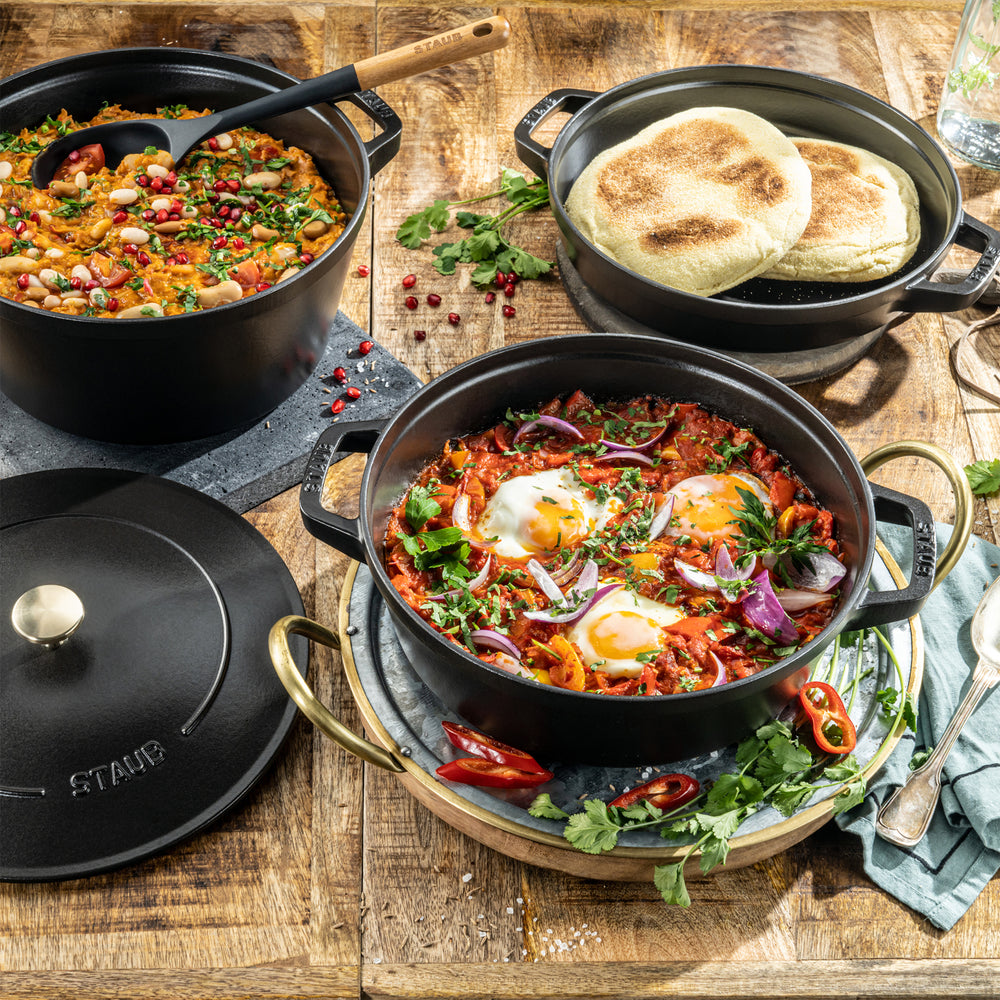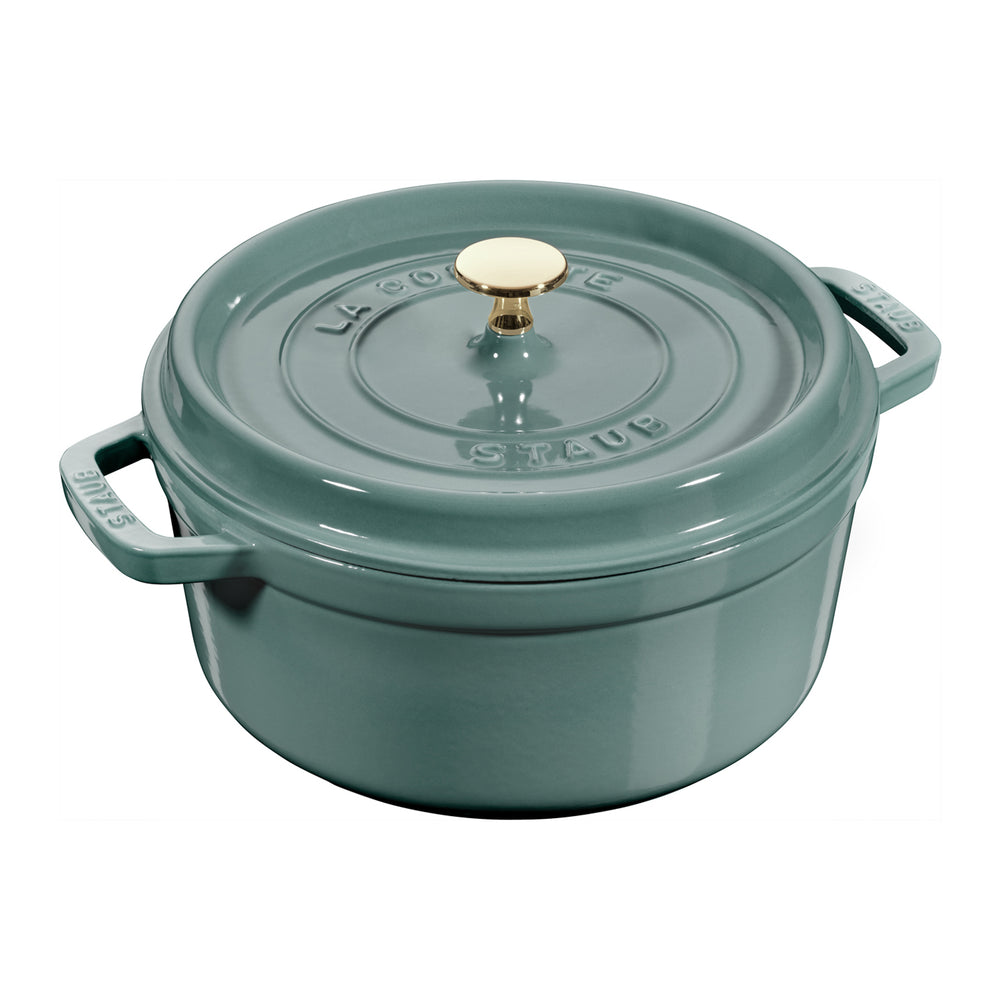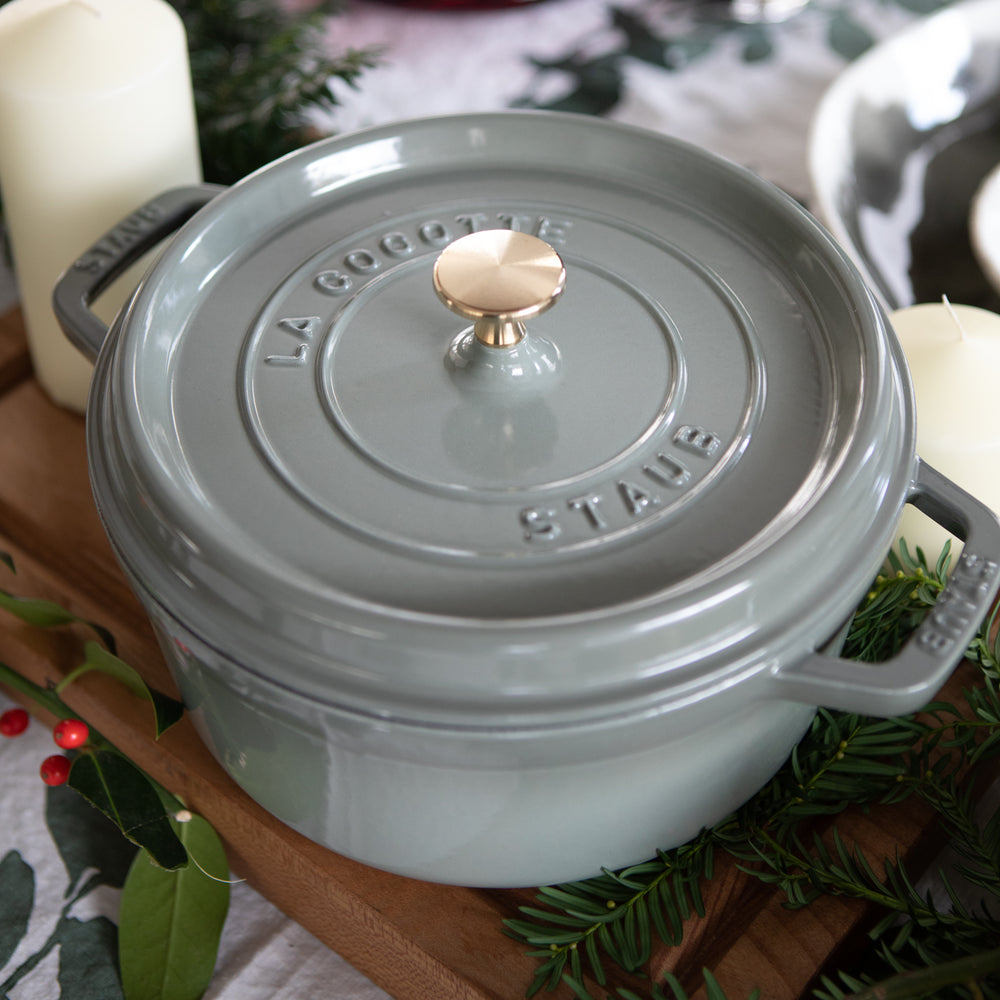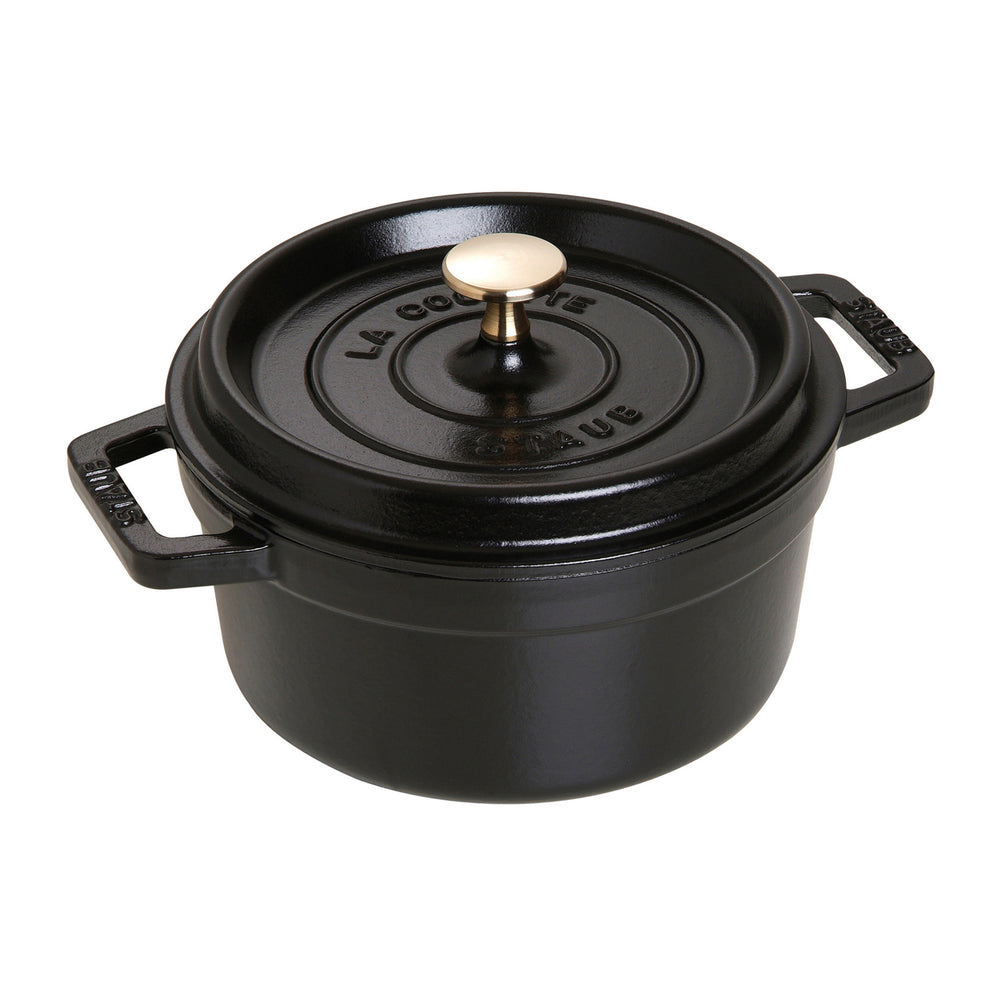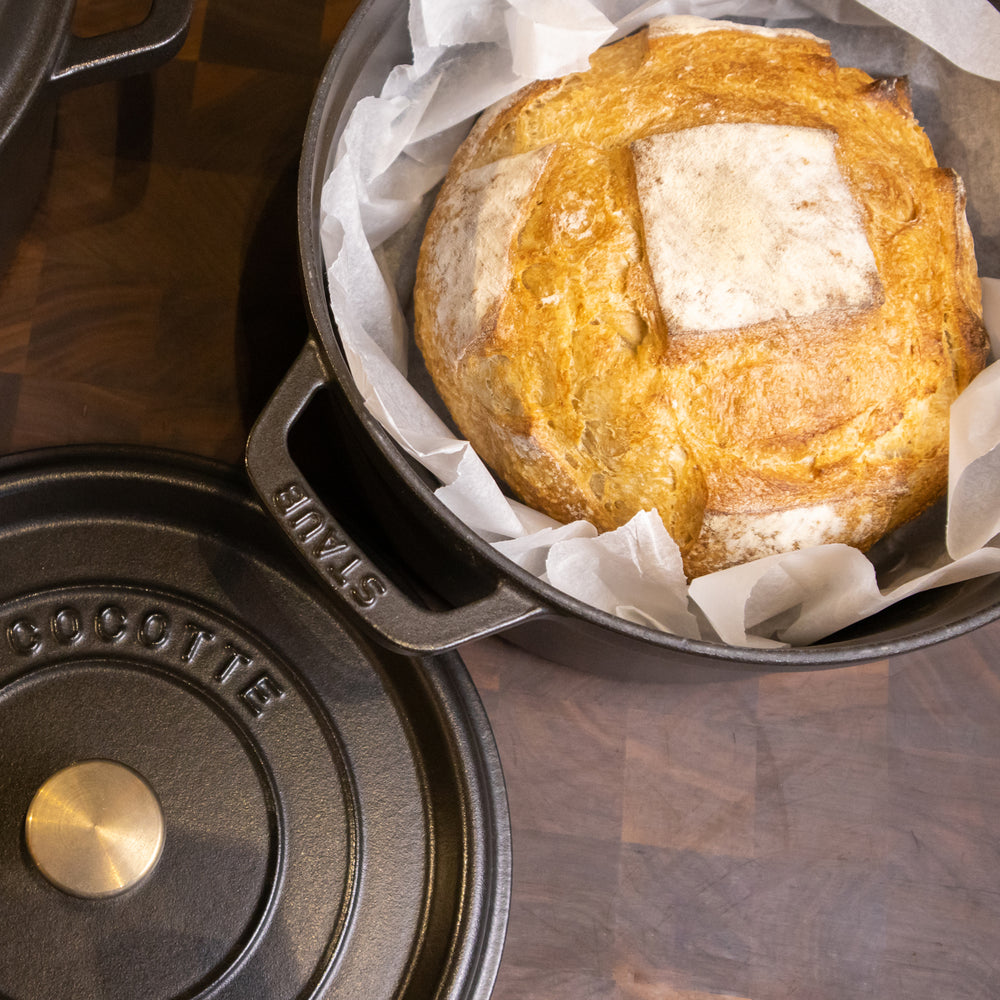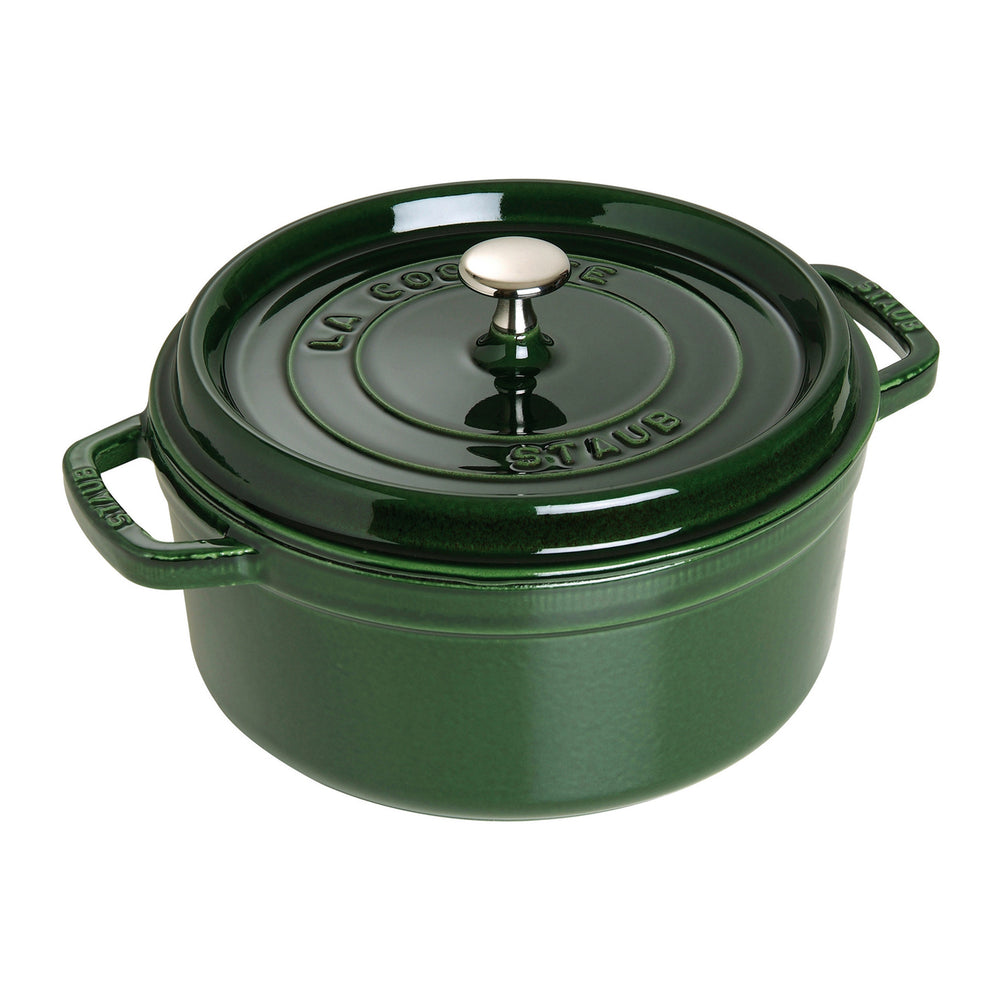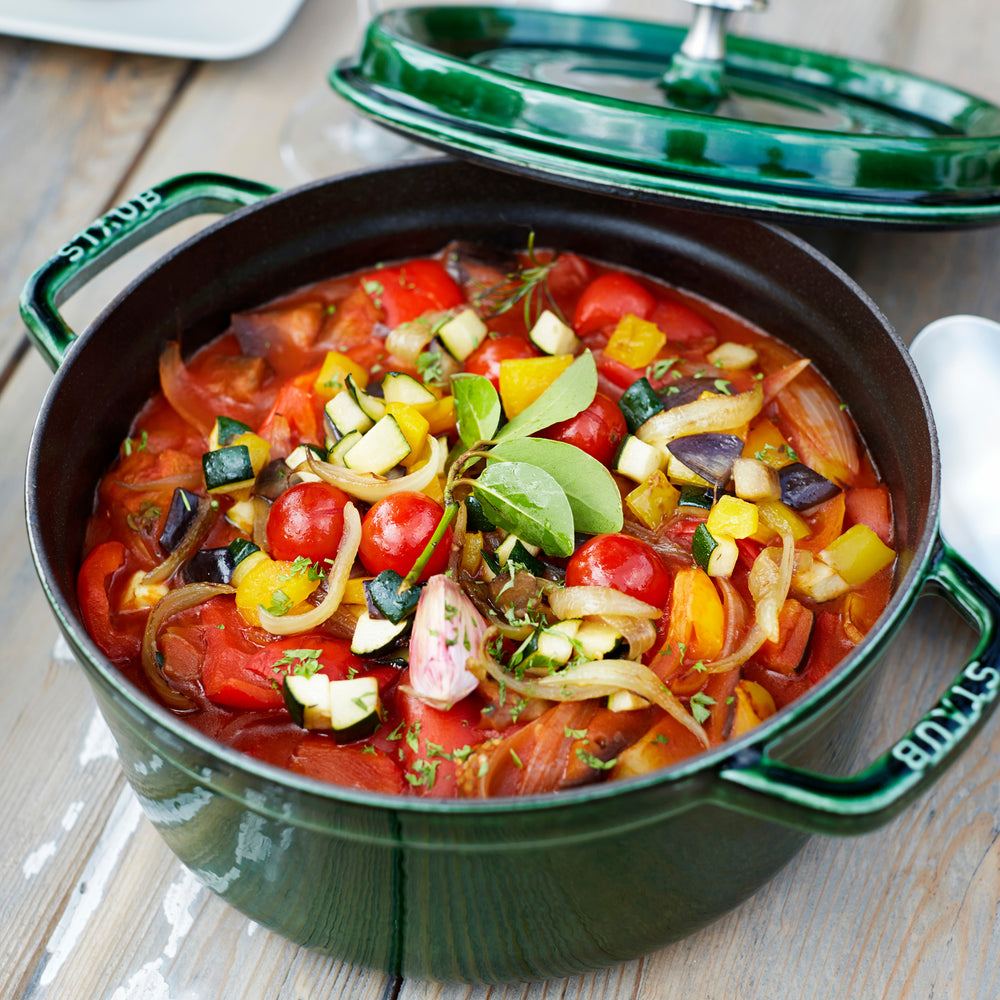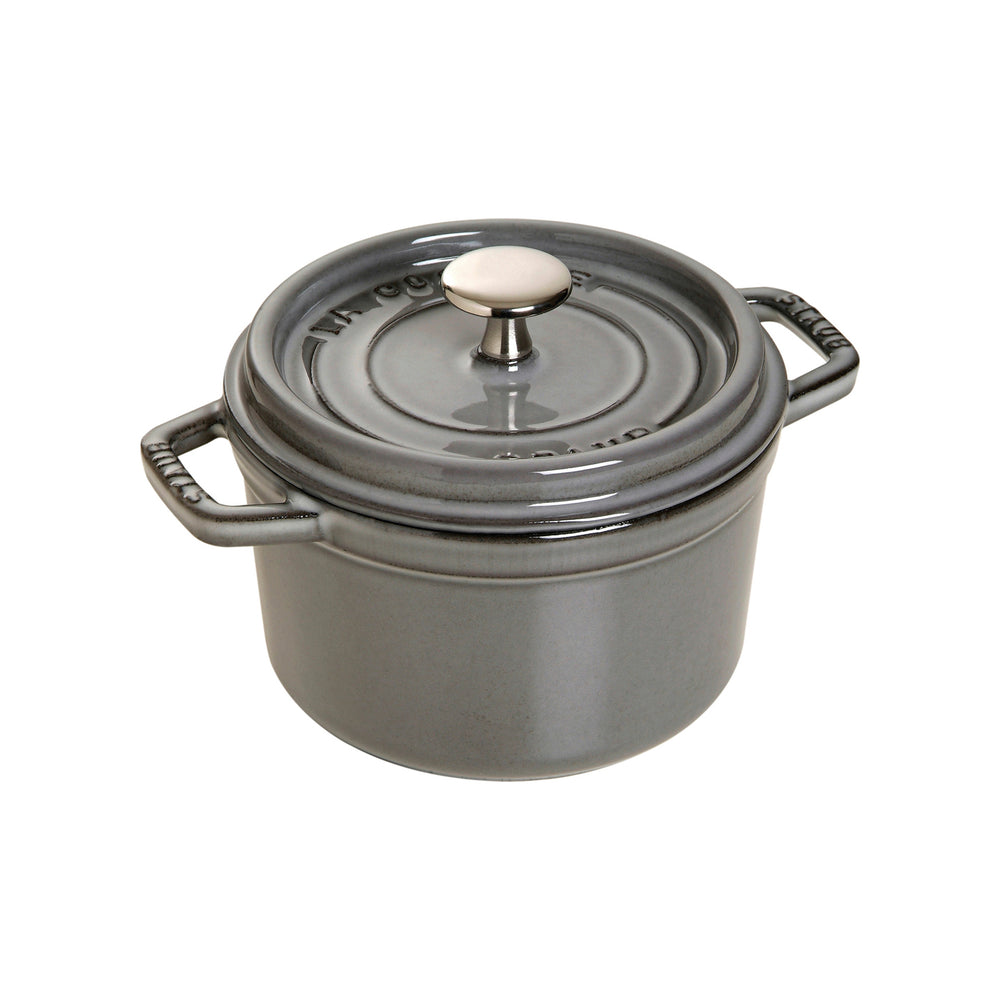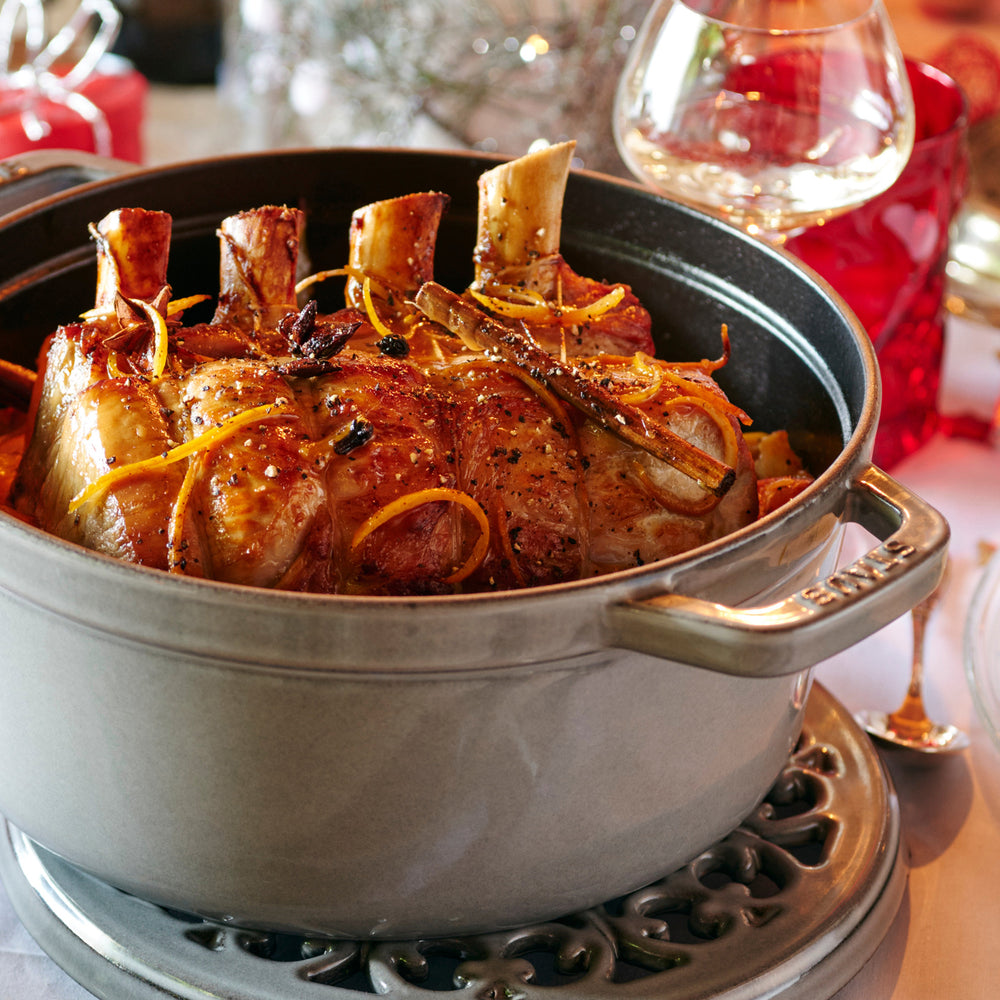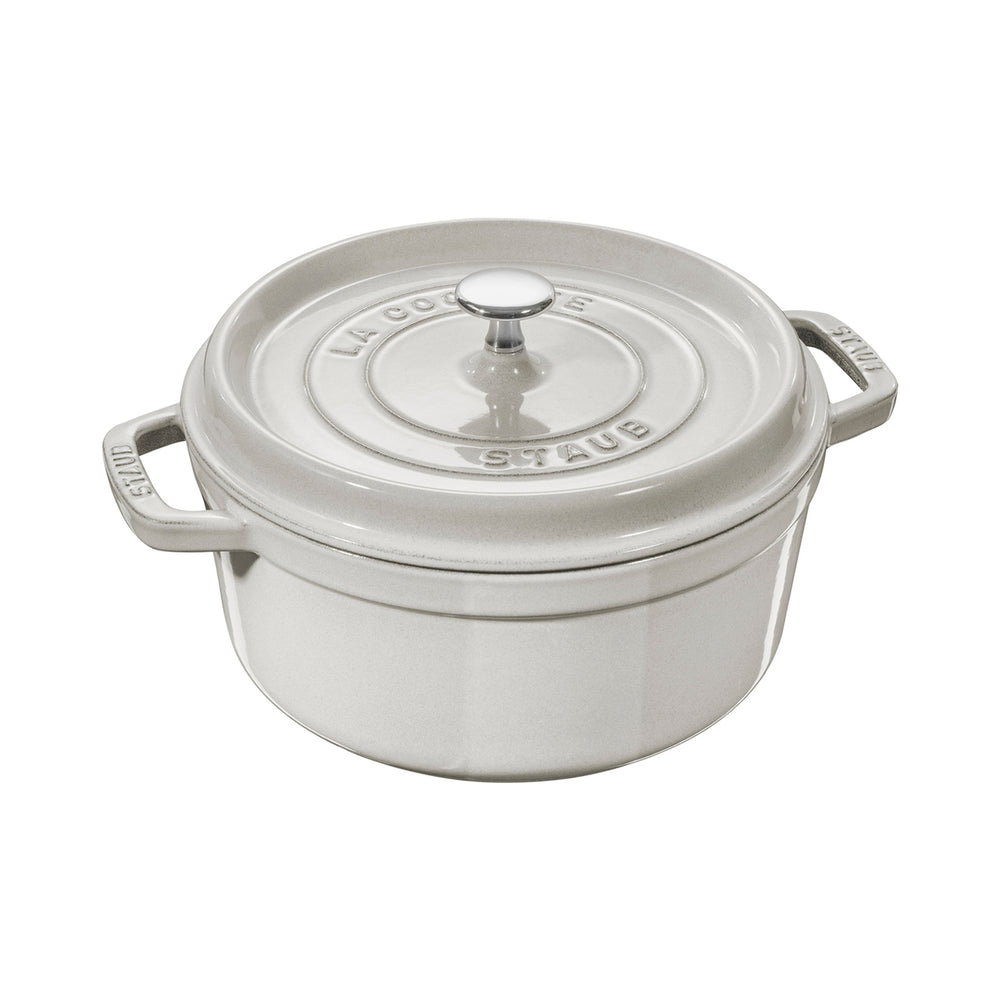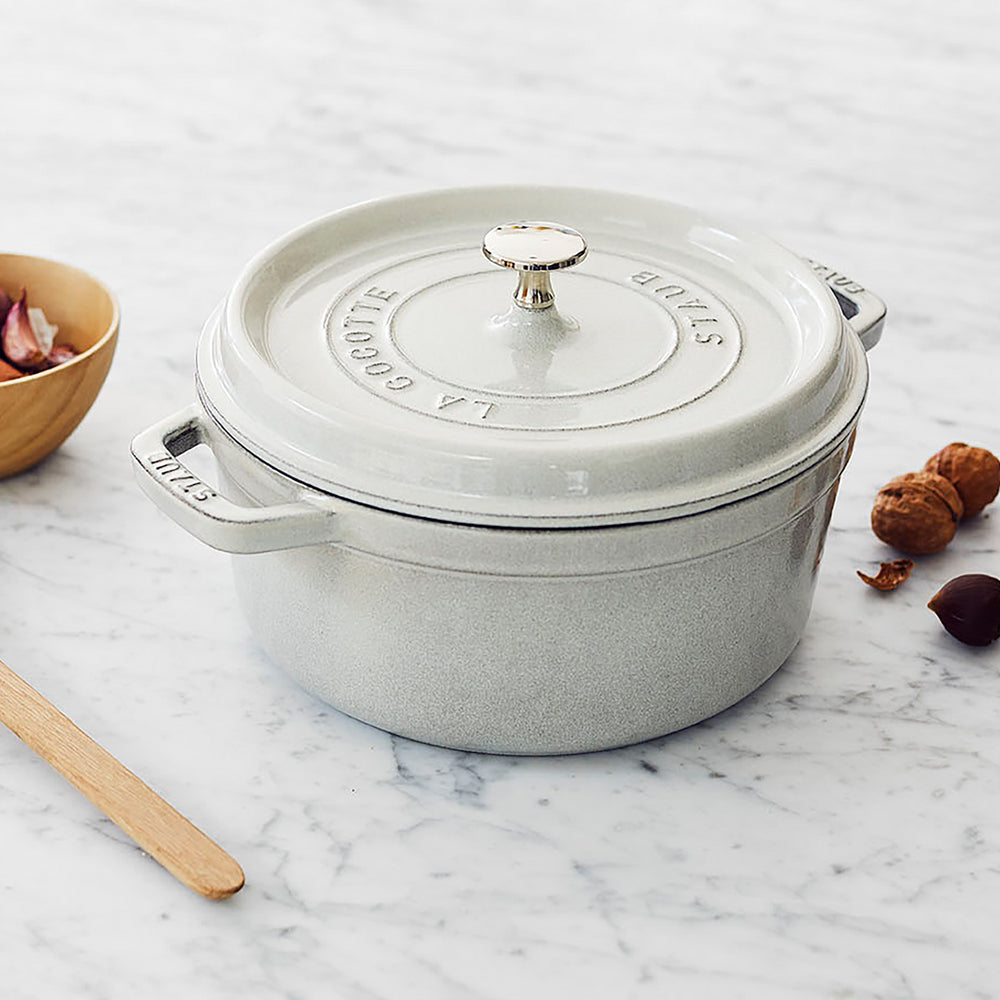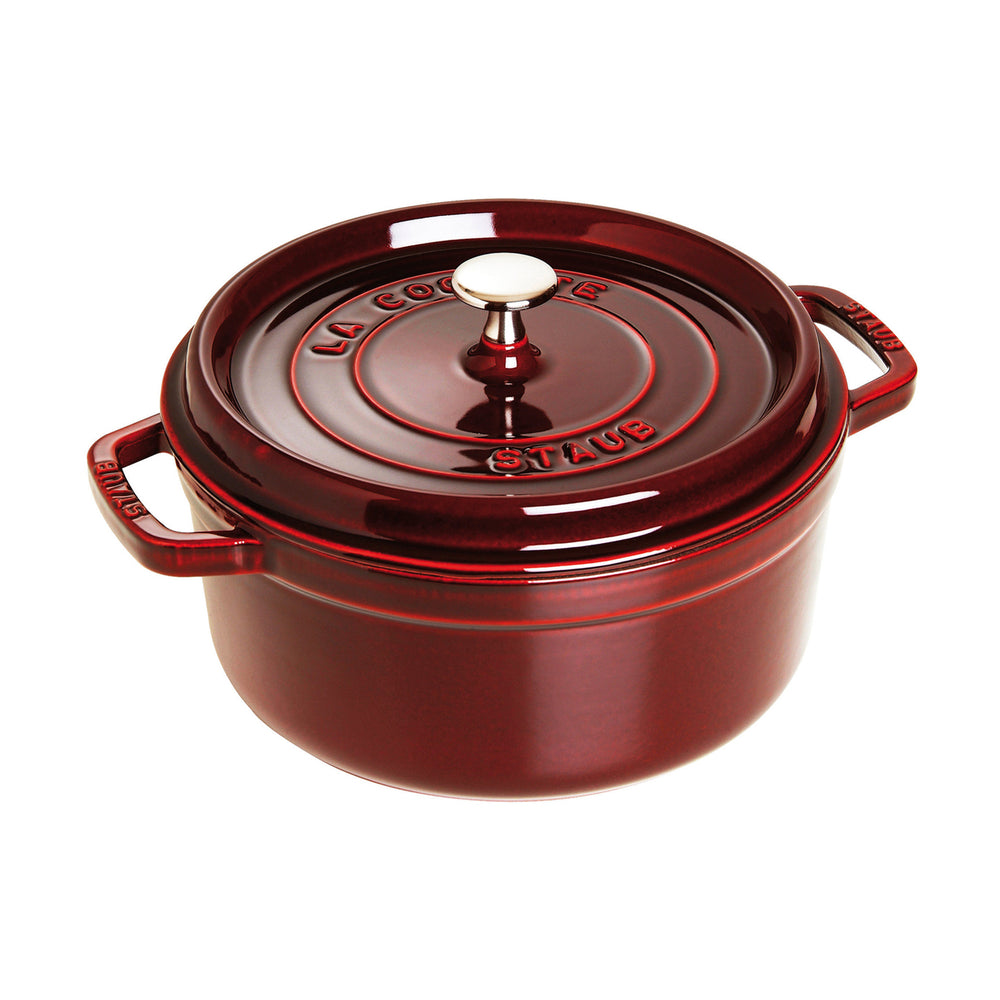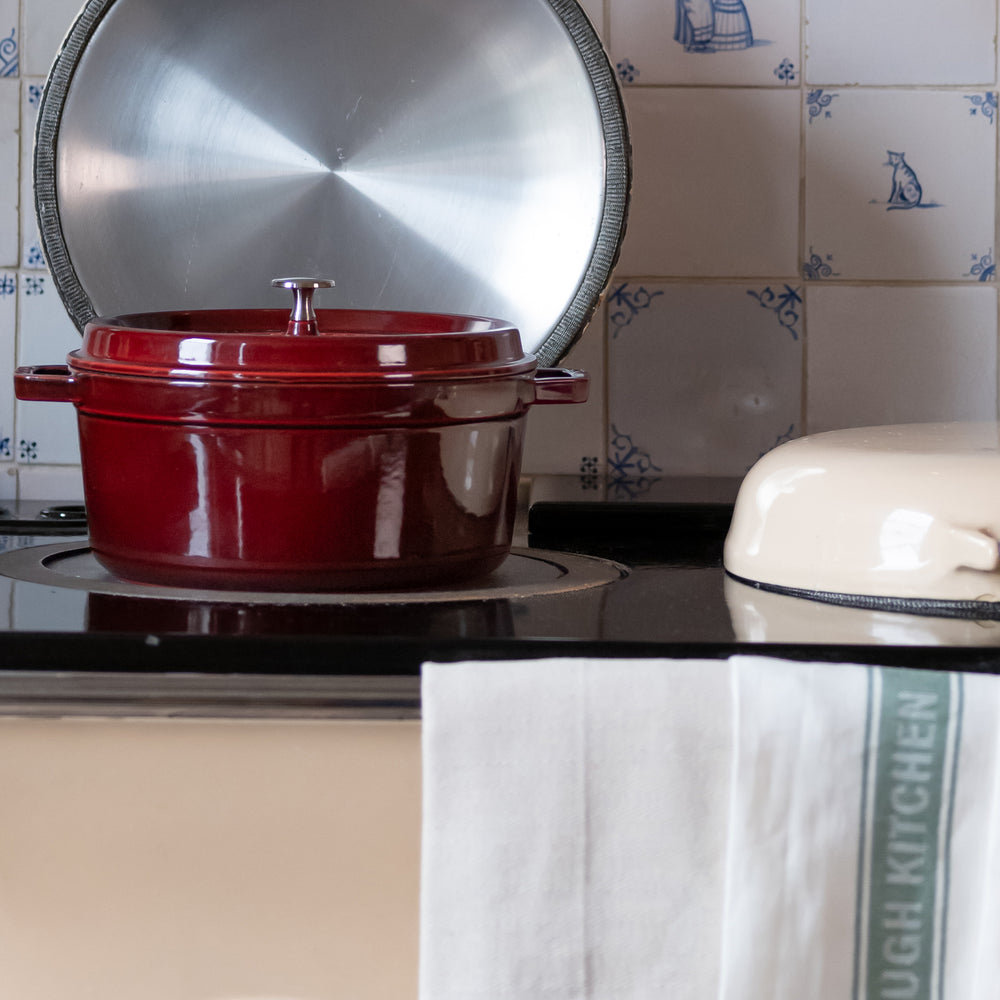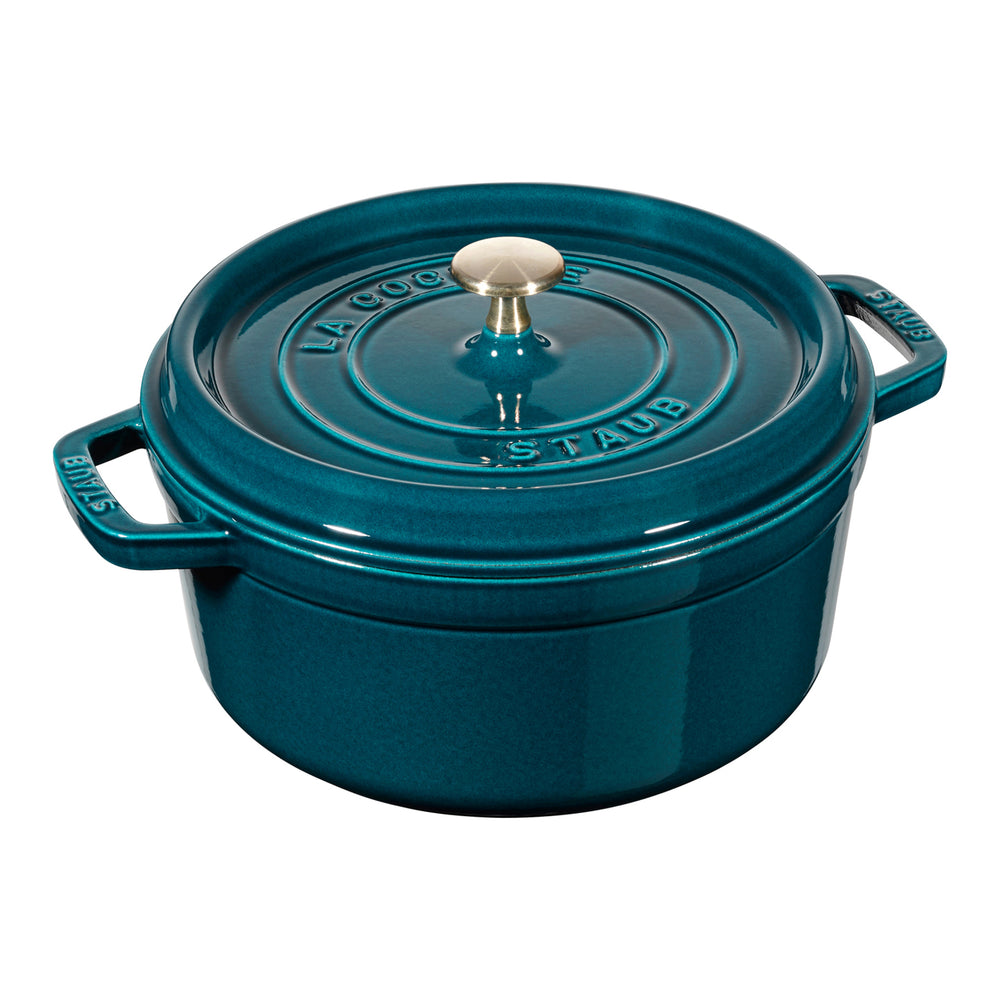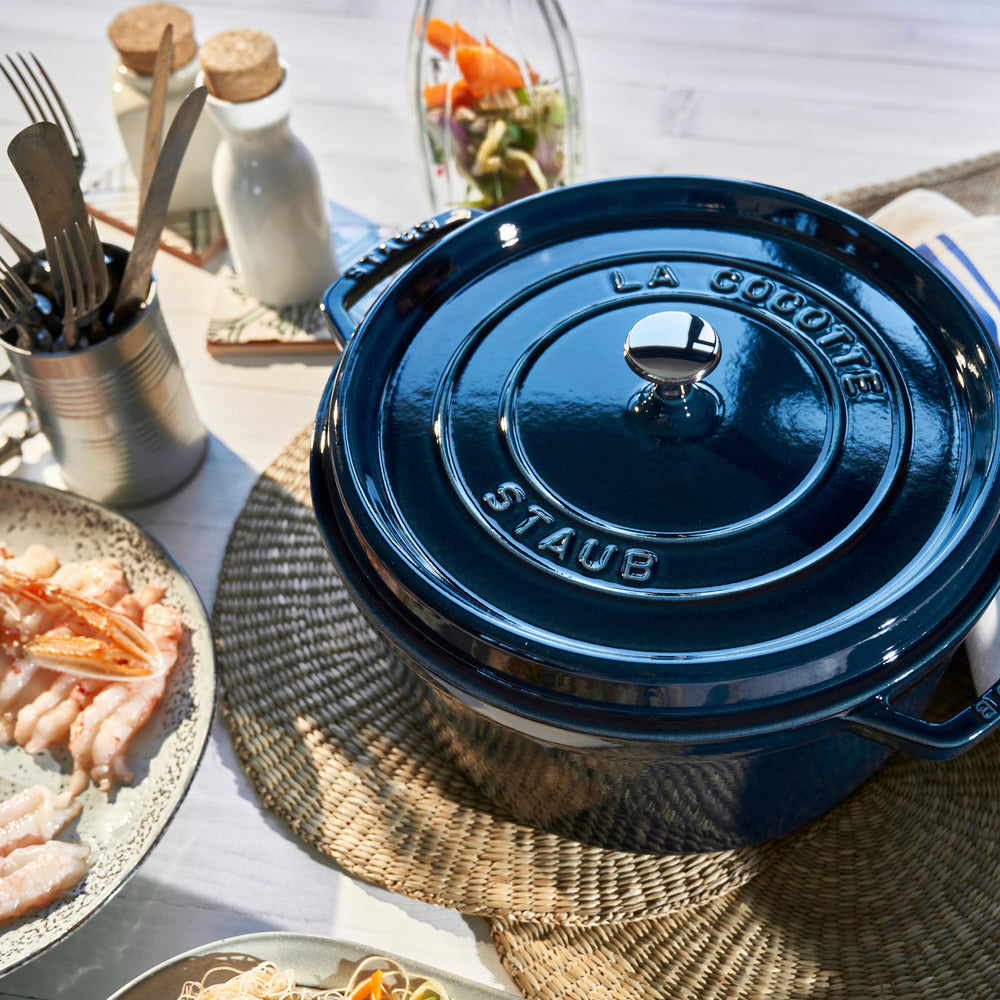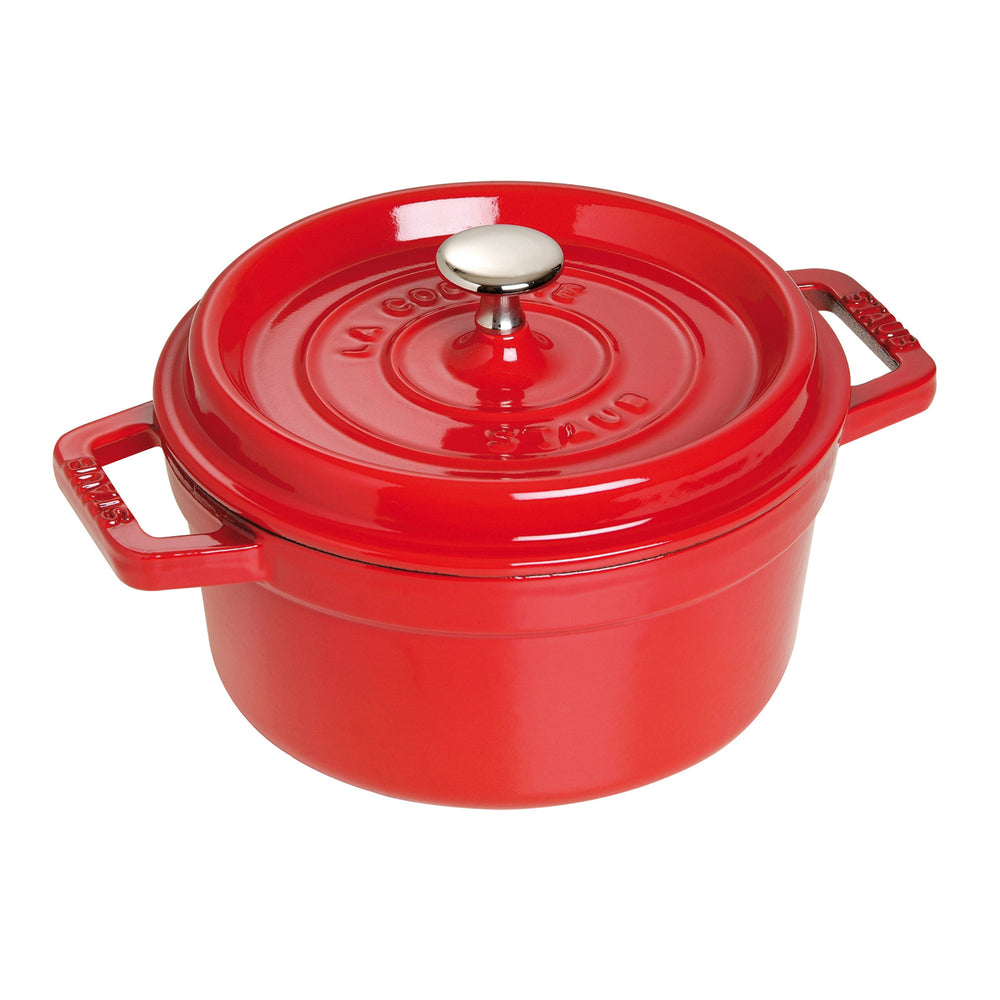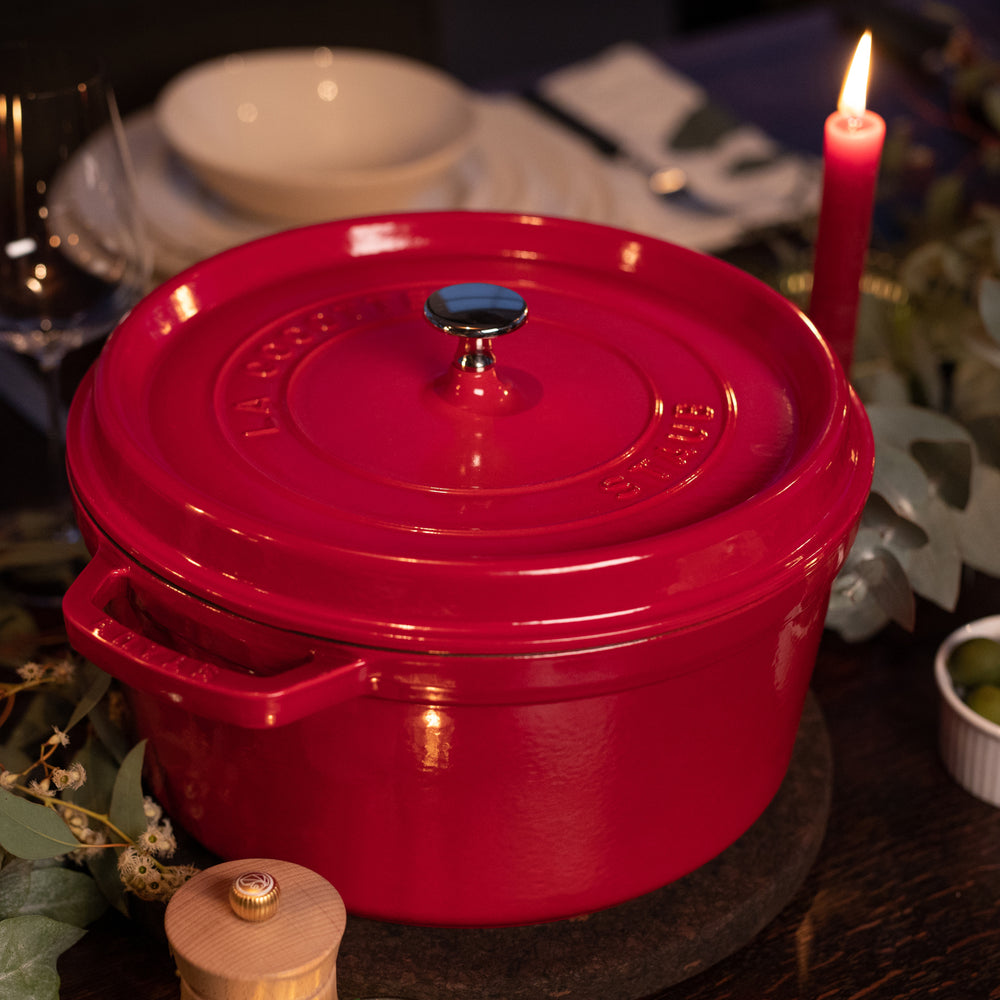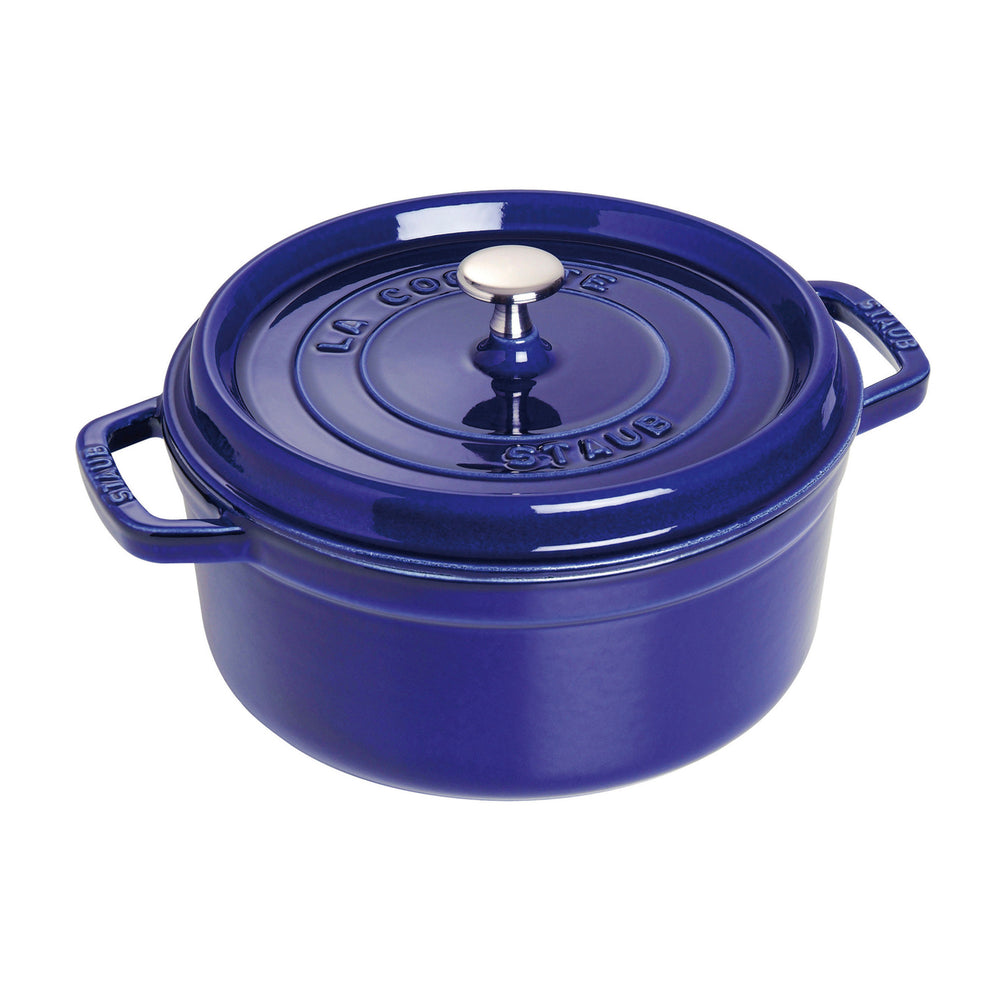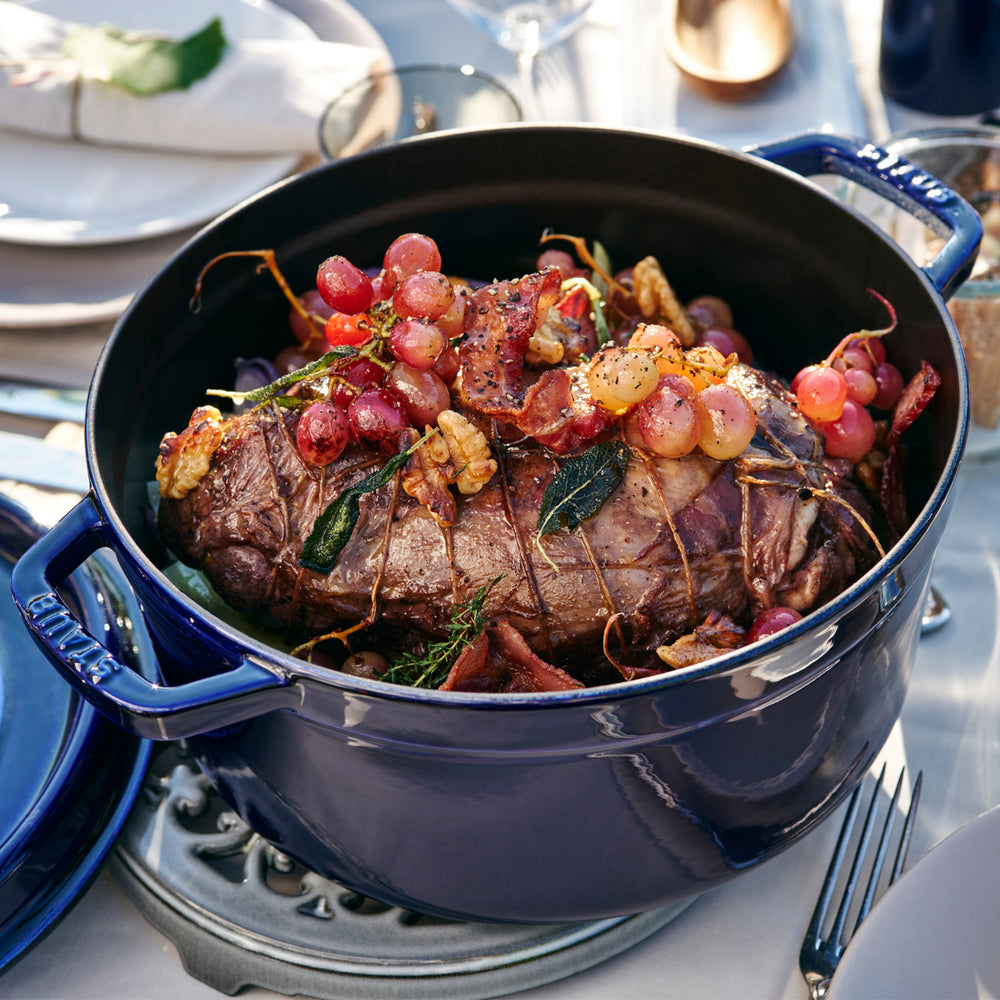At Borough Kitchen, we test many, many products before selecting what goes on our shelves, making sure we choose the highest-quality items available at a variety of price points. Here, we've detailed what makes a superior cast iron cocotte (also called a casserole or Dutch oven), and the differences between our favourites from Staub and Tramontina.
First things first: what is a cocotte—and what is an enamelled cast iron cocotte? Also known as a casserole or Dutch oven, a cocotte is a pot with a lid, designed for slow cooking food on the hob or in the oven. It is ideal for making stews, biriyanis, pasta sauces, anything you want to cook in a pot and move freely from hob to oven to table.
What makes an enamelled cast iron cocotte, like a Staub or a Tramontina, stand out is its ability to take on super high temperatures, which results in something called the Maillard reaction—the fancy, scientific way of saying 'gorgeous browning'. Cast iron also retains that heat very well, so your food cooks evenly and thoroughly, making it perfect for roasting meat and baking crusty loaves of bread. Best of all, cast iron is notoriously durable, made to last decades of heavy use.
Cast iron, however, is a reactive material that can leach metal onto food, or rust upon prolonged contact with water—that's why it needs to be seasoned before use and regularly as part of its general maintenance. When coated with enamel, however, there is no need to build a layer of natural seasoning, because the enamel acts as a barrier between the raw cast iron and your food. So you can cook anything in enamelled cast iron pots and pans without fear, regardless of how acidic, and clean it with regular washing-up liquid—not the case with raw cast iron. If you notice the enamel inside the pan loses a bit of its lustre over time, just rub a bit of vegetable oil around the pan, heat it over medium-high heat, and it will look fresh as it did on day one.
Staub cocottes are made in France, while Tramontina casseroles are made in China. They both feature:
1. User-Friendly Enamel Coating
As noted earlier, in Staub and Tramontina pans, enamel acts as that barrier between the cast iron and your food, so there's no need to cultivate that layer of seasoning. You can use washing-up liquid to scrub these cocottes clean and cook acidic foods like tomato soup or any type of fruit compote in them without any risk of them diminishing the seasoned layer. In other words, you can reap the benefits of cast iron—like the ability to get extremely hot, retain that heat beautifully, and keep your food warm, long after you bring it to the table—but say adieu to the fuss.
2. Black Enamel (As Opposed to White Enamel)
You'll come across cast iron cocottes with an inner lining of either white enamel or black enamel, and we are firmly on team black enamel. A slightly porous texture makes black enamel much, much easier to clean up. Black enamel is also better at holding higher temperatures, which means your food browns and retains heat better—and that's really the point of cast iron! Lastly, you cannot see stains on black enamel, making your pots look good as new even when they are not.
3. Heavy-Duty Lids
Staub cocottes have a secret weapon: their lids. Look under them and you’ll see little bumps that work to trap steam and create a little rainstorm inside the pot. This is a self-basting mechanism that lets your food retain moisture and maximises flavour. Tramontina lids, on the other hand, have smooth undersides. While this heavy-duty lid provides excellent heat retention, it does not have the same self-basting mechanism.
4. Durability
Staub and Tramontina cocottes are lifetime products, guaranteed to withstand decades of use and play a leading role in your family recipes.

Staub
A favourite of chefs and home cooks around the world, Staub cocottes come in a wide range of colours and shapes—and while we don’t like to harp on about aesthetics, there’s no denying they are gorgeous, even (especially) in simple, brass-topped matt black.
1. Highest-Quality Enamel
Staub cocottes have three layers of top-quality enamel, which is sprayed on rather than painted; this makes the enamel bond to the cast iron so it's, well, ironclad. The three coats also make a Staub exceptionally durable, able to be passed down generations.
2. Thicker Cast Iron
Staub cocottes contain more cast iron than Tramontina casseroles. Because they have more mass for heat to pass through, these pots get hotter. In cook speak, that translates to better browning, faster reducing, and a more constant temperature when frying.
3. Better Basting
Staub cocottes have bumps under their lids that allow for self-basting, a patented feature. This means food cooked in a Staub retains maximum moisture, thanks to that flavour rainfall.
4. Slightly More Durable
All of the above makes Staub cocottes slightly more durable than a Tramontina. They'll both last decades, but Staub cocottes have a track record of being passed down generations—just ask anyone you know from France. There's something undeniably special about a Staub you've used to cook hundreds of meals—that’s why Copywriter Nikkitha lugged hers along in a carry-on when she moved to London!

Tramontina
Though not as well known or as storied as Staub, Brazilian company Tramontina makes cookware that's used all over the world and known for their reliability. We added their Trento range to our shelves after Tramontina made significant improvements to the design in 2021.
Tramontina casseroles have bases that taper slightly towards the bottom, making them great for reducing stews and simpler to clean. One inner layer of enamel makes a Tramontina cocotte lighter than a Staub—which is great if you're looking for a less weighty pan—and the improved design includes better weight distribution between the pan and the lid. Tramontina also reinforced the bases of their pans with more glass particles, so they can stand up to intense direct heat from the hob better than their older models. Less cast iron and no bumps in the lid mean there's no self-basting mechanism, but it's still excellent at collecting steam. We carry Tramontina casseroles in a limited range featuring a 24cm or 28cm pot in one colour, matt black; as well as their saute casserole and wok.
Simply put: Tramontina offers the highest-quality cast iron on the market at the most approachable price point.
A Highly Opinionated Size Guide
Our favourite size is a 28cm round cocotte, which makes about eight servings of food with the added value of being able to fit a whole chicken, a large loaf of sourdough, and a dinner party's worth of biriyani. This size is available in both Staub and Tramontina.
A 24cm round cocotte is the smallest we’d recommend. It makes enough food to serve four and bakes a small loaf of bread. If you live alone or in a small household, it's a great option, but do consider something larger—just in case your household expands, you have friends over for dinner, or want to make enough Bolognese to keep leftovers in your freezer that will see you through times when your fridge is empty. This size is available in both Staub and Tramontina.
Other Sizes to Consider
- 20cm = Great for individual or two-person portions of moules-frites, fondues, and rice. Available in Staub only.
- 22cm = A bit larger than the 20cm with similar functions. Available in Staub only.
- 24cm = See above.
- 26cm = Makes about 6 servings, but you may as well size up just in case you need to! Available in Staub only.
- 28cm = See above.
- 30cm and 34cm = Makes 10 and 12 servings, respectively. Great for big households and bon vivants! Available in Staub only.
Staub also has oval cocottes, which we love for roasting legs of lamb, making long loaves of bread, and anything a round cocotte can do, but oval-er.
Shop all cocottes, Dutch ovens and casseroles
here.



